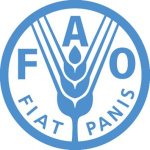- Industry: Agriculture
- Number of terms: 87409
- Number of blossaries: 0
- Company Profile:
Established in October 1945 with the objective of eliminating hunger and improving nutrition and standards of living by increasing agricultural productivity, FAO coordinates the efforts of governments and technical agencies in programs for developing agriculture, forestry, fisheries, and land and ...
(C<sub>2</sub>H<sub>6</sub>O; f.w. 46.07) Commonly used to disinfest plant tissues, glassware utensils and working surfaces in tissue culture manipulations. The concentration used is 70% (v/v) for disinfecting and 95% (v/v) when flaming tools. Ethanol is also used to dissolve water-insoluble additions (addendums) to culture media.
Industry:Biotechnology
Undifferentiated but determined tissue, the cells of which are capable of active cell division and differentiation into specialized and permanent tissue such as shoots and roots.
Industry:Biotechnology
Each of the two daughter strands comprising a duplicated chromosome. The term remains in use while the two chromatids are still joined at the centromere. As soon as the centromere divides, setting the two chromatids adrift (during anaphase of mitosis; and during anaphase II of meiosis), they are called chromosomes.
Industry:Biotechnology
1. The initial stages in the growth of a seed to form a seedling. The embryonic shoot (plumule) and embryonic root (radicle) emerge and grow upwards and downwards respectively. Food reserves for germination come from endosperm tissue within the seed and/or from the seed leaves (cotyledons).
2. The growth of spores (fungal; algal) and pollen grains.
Industry:Biotechnology
A bulbous growth that occurs at the base of certain plants as result of infection, especially by <i>Agrobacterium tumefaciens</i>; a bacterial gene carried by the Ti plasmid is transferred by the bacteria into a higher plant cell, where it causes a tumour-like growth. a.k.a. crown gall tumour.
Industry:Biotechnology
A process in which unspecialized cells develop structures and functions characteristic of a particular type of cell. Development from one cell to many cells, accompanied by a modification of the new cells for the performance of particular functions. In tissue culture, the term is used to describe the formation of different cell types.
Industry:Biotechnology
A technology by which a single female that usually produces only one or two offspring can produce a litter of offspring. Involves stimulation of a female to shed large numbers of ova; natural mating or artificial insemination; collection of fertilized ova (either surgically, or non-surgically through the cervix); and transfer (usually non-surgical, through the cervix) of these fertilized ova to recipient females.
Industry:Biotechnology
Defined in the International Undertaking on Plant Genetic Resources (FAO, 1983) to mean the reproductive or vegetative propagating material of the following categories of plants:
(i) cultivated varieties (cultivars) in current use and newly developed varieties;
(ii) obsolete cultivars;
(iii) primitive cultivars (landraces);
(iv) wild and weed species, near relatives of cultivated varieties; and
(v) special genetic stocks (including elite and current breeder's lines and mutants).
Industry:Biotechnology
Diffusion from areas of high concentration to areas of lower concentration of a solvent through a differentially permeable membrane.
Industry:Biotechnology
